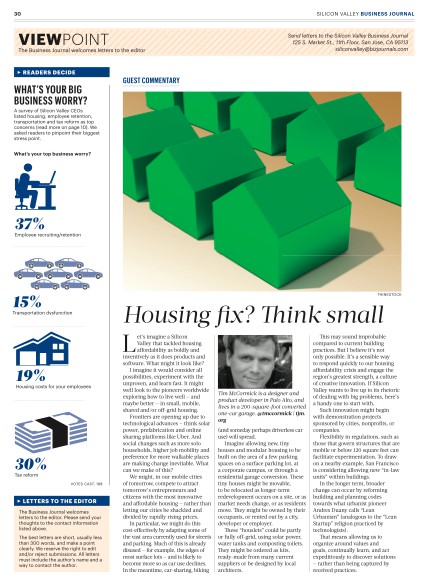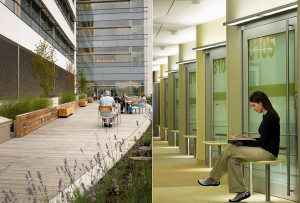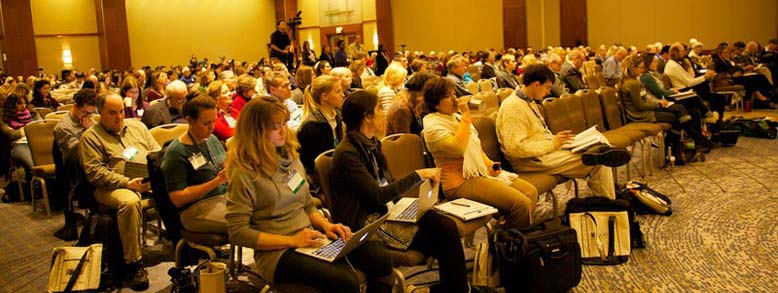 I was invited to write this piece by Greg Baumann, editor at Silicon Valley Business Journal, in connection with their ongoing features on housing affordability issues in Silicon Valley. It ran as “Guest Commentary” on their Viewpoints section, with the title “Housing fix? Think small,” in the print edition and subscribers-only section online. PDF version of article as published
I was invited to write this piece by Greg Baumann, editor at Silicon Valley Business Journal, in connection with their ongoing features on housing affordability issues in Silicon Valley. It ran as “Guest Commentary” on their Viewpoints section, with the title “Housing fix? Think small,” in the print edition and subscribers-only section online. PDF version of article as published
Let’s imagine a Silicon Valley that tackled housing affordability as boldly and inventively as it does products and software. What might it look like?
I imagine it would consider all possibilities, experiment with the unproven, and learn fast. It might well look to the pioneers worldwide exploring how to live well — and maybe better — in small, mobile, shared, and/or off-grid housing.
Frontiers are opening up due to technological advances — think solar power, prefabrication, and online sharing platforms like Uber. And social changes such as more solo households, higher job mobility, and preference for more walkable places are making change inevitable. What can we make of this?
We might, in our mobile cities of tomorrow, compete to attract tomorrow’s entrepreneurs and citizens with the most innovative and affordable housing — rather than letting our cities be shackled and divided by rapidly rising prices.
In particular, we might do this cost-effectively by adapting some of the vast area currently used for streets and parking. Much of this is already disused — for example, the edges of most surface lots — and is likely to become more so as car use declines. In the meantime, car-sharing, biking (and someday perhaps driverless car use) will spread.
Imagine allowing new, tiny houses and modular housing to be built on the area of a few parking spaces on a surface parking lot, at a corporate campus, or through a residential garage conversion. These tiny houses might be movable, to be relocated as longer-term redevelopment occurs on a site, or as market needs change, or as residents move. They might be owned by their occupants, or rented out by a city, developer, or employer.
These “houslets” could be partly or fully off-grid, using solar power, water tanks, and composting toilets. They might be ordered as kits, ready-made from many current suppliers, or be designed by local architects.
This may sound improbable, compared to current building practices. But I believe it’s not only possible. It’s a sensible way to respond quickly to our housing affordability crisis and engage the region’s greatest strength, a culture of creative innovation. If Silicon Valley wants to live up to its rhetoric of dealing with big problems, here’s a handy one to start with.
Such innovation might begin with demonstration projects sponsored by cities, non-profits, or companies. Flexibility in regulations, such as those that govern structures that are mobile or below 120 square feet can facilitate experimentation. To draw on a nearby example, San Francisco is considering allowing new “in-law units” within buildings.
In the longer term, broader change can occur by reforming building and planning codes towards what urbanist pioneer Andres Duany calls “Lean Urbanism” (analogous to the “Lean Startup” religion practiced by technologists). That means allowing us to organize around values and goals, continually learn, and act expeditiously to discover solutions — rather than being captured by received practices.
In a region where rents are skyrocketing, forcing talent out of the market, all options should be on the table.
—-
Tim McCormick is a designer and product developer in Palo Alto, and lives in a 200-square-foot converted one-car garage. @tmccormick / tjm.org.
![]()




